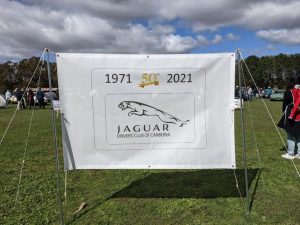Hollywood vs Tradition – A Review of Formula 1: Drive to Survive
Throughout the 2018 Formula 1 World Championship, online streaming company Netflix was given unprecedented access to the world of Formula 1 racing, something that has never been done before.
Unparalleled Speed. Unprecedented Access.
F1 comes to @Netflix. From the producer of Amy and Senna, go deeper into the world of F1 in this exclusive all access documentary.
Formula 1: Drive to Survive. Coming globally to Netflix on March 8. pic.twitter.com/4grSh7f9vs
— Formula 1 (@F1) February 20, 2019
Netflix was permitted to film all the races across the globe, along with all participating teams besides two. They were able to film and capture footage of interviews and interactions between the teams, as well as drivers they have never been seen before. This demonstrates that even diehard fans of the sport were unaware of stories circulating in the paddock.
Formula 1 has never been an organisation to let third parties into their little “bubble”. Their DNA has been built from its inception back in 1950 on innovation, secrecy, advancements in technology and money. All teams are trying to perform to the best of their ability in order to produce the fastest possible car on the track.
What Netflix has been able to produce is a visually impressive documentary piece that provides a rich understanding of how Formula 1 caters to a large audience.
Being able to film inside the garages, motorhomes, factories, training facilities and homes of drivers immersed the viewer into feeling as though they were there with them. All these places are usually kept secret as teams don’t want to reveal their strengths and weaknesses.
During the series, Netflix was able to capture the emotional and physical strain the drivers face throughout their time in Formula 1. Many say it is easier to get to Formula 1 than it is to stay in; if a driver makes the smallest mistake, it could cost them their seat for the following year. Netflix captures these moments when drivers are at their highs and lows, unlike when they face the media and put a mask on, saying everything is perfect.
A race weekend usually has a very set structure in regards to when drivers and team principals are able to engage with the media, this is usually before the race weekend (Thursday) and after each session that a driver is on track. Netflix was able to have access to these sessions as well as conduct their own interviews in their own set with who they were focusing on over the course of the weekend, and despite this being a great addition to the series, this is where the downfall begins.
As drivers talk to the traditional media after their sessions in the car, they are still in the heat of the moment as everything feels real and raw. The series, having conducted their own interviews on their own sets with teams, made these sound as though what they were saying was scripted. The camera angles used, the pauses between lines, it sounded as though they had been told what to say and when to say it. Whenever this happens, which is fairly constant in the series, it sounds fake, tacky and unnecessary. These people are professional athletes, not professional actors.
Another issue with the series is how Netflix changed the audio levels and tone of the cars themselves. Back in 2014 a major regulation change of the engine meant the sound of the cars changed dramatically. One would normally relate a Formula 1 car to a loud, screaming, high revving engine. That changed to a much lower toned, lower revved engine and Netflix has been caught out on this. Throughout the series, the cars’ sound has been changed to make it more appealing to the viewer as no one wants to listen to a dull sounding engine. If a viewer watched the series and then compared it to a real life viewing, they would clearly be able to hear a discrepancy between the two.
As Netflix are trying to create a series that would be appealing to a large audience, the way they capture footage and audio and edit it in post production makes the scenario over dramatised. This is most evident when the team bosses interact with each other when tensions seem to be running at a high. When the series was released, these same bosses had to come out and defend themselves saying that many of the scenarios are taken out of context just for the pleasure of the viewer.
Netflix has definitely made a great TV series. Having been able to watch races in person and on TV for many years and now being able to witness never seen before footage on Netflix can provide a greater understanding to people that may not understand how Formula 1 works. However, its editing and post production process must change in order to not take such instances out of context and keep Formula 1’s tradition, not Hollywood’s drama.


Be the first to comment!